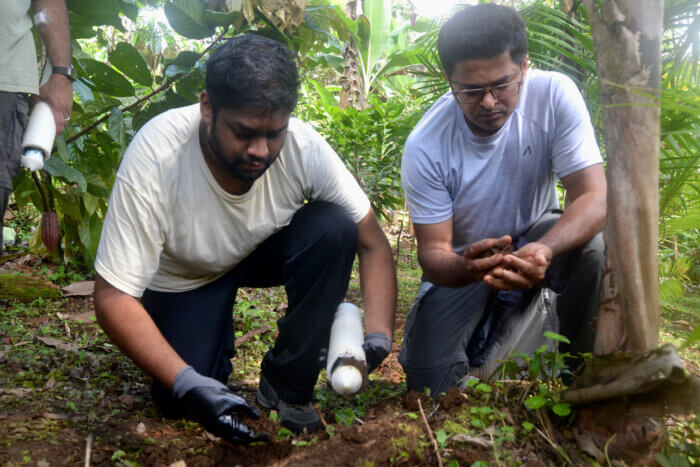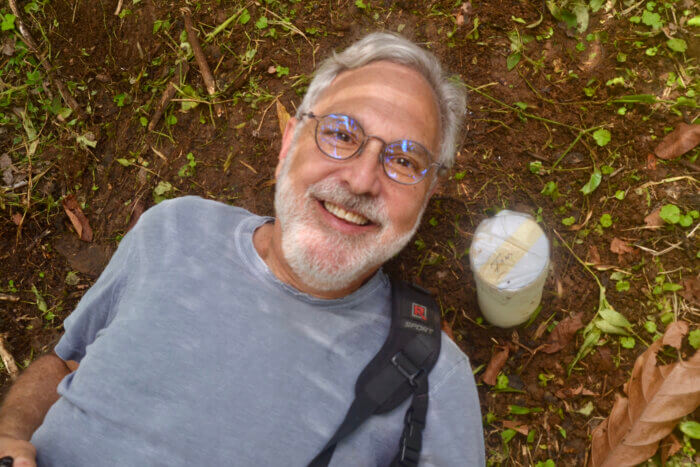We describe Finca Luna Nueva as “both a recreational paradise and a living classroom.” We think we need to add “we’re also a living laboratory,” as distinguished scientists from the University of Texas, Dallas and Texas A&M University came to our syntropic cacao field to test new technology for the measurement of soil health.

Dr. Vikram Dhamu (UTD) and Dr. Anil Sommenahally (TAMU), pictured above, brought with them experimental electrochemical soil sensors and probes that they hoped could accurately measure the levels of soil carbon, nitrogen, water, and other aspects of soil health. Older soil-core technology could measure those health indicators, but the old technology is disruptive, time consuming, expensive, always requires a technician, and only gives a snapshot – a single point-in-time – measurement. Scientists hope the new electrochemical sensors could take accurate measurement in real time and over time – like a wearable device that can measure your pulse, blood pressure, or glucose levels. We humans have living tissue that sensors can reliably measure, but Mother Earth also has living tissue capable of biomedical measurement. It’s called soil!
We at Finca Luna Nueva use agricultural practices that we and others believe will improve the health of the soil, but do they? We think our beliefs are “well grounded,” but without scientific confirmation we’re really just, well, believers. Farmers like us around the world (and there are tens of millions of us working to improve soil health) want to use the tools of modern science to confirm the validity of our ancient practices. We, of course, can see with our own eyes that our soils are getting deeper, darker, and more porous – visible indicators of soil health. What if we could use a “wearable” device that slips easily into the soil and tells us precisely if and how our practices are working? What if there were soil-health data that insurance companies, carbon markets, governments, and banks could use to reward farmers for putting carbon to work in their fields? Regenerative green dreams might just become the standard practices of farmers everywhere – if the right scientific tools were inexpensively available to the hundreds of millions of farms around the world. This is why Drs. Dhamu and Sommenahally are researching this new technology!
And there’s another key reason they came to Finca Luna Nueva: our soil type is “andisol,” meaning that it was created by volcanic activity. It’s the rarest soil type; only about 1% of global soils are andisols, and its high mineral content makes it a true stress test for electrochemical sensors. As our scientists said, if the electrochemical sensors worked here at Luna, they’d work anywhere.
And work they did! The scientists are not ready to share the data from their research at Luna, but they told us the sensors worked, gave great data that were highly accurate, and our living laboratory thus generated results that will help to advance soil and planetary science. We anticipate that the scientists will soon write a paper about our rare soils, just like the paper that was just published about their research at the Donald Danforth Plant Science Center in Missouri.
And how does this make us feel at Finca Luna Nueva? Happy as a functioning electrochemical sensor in volcanic soil!


